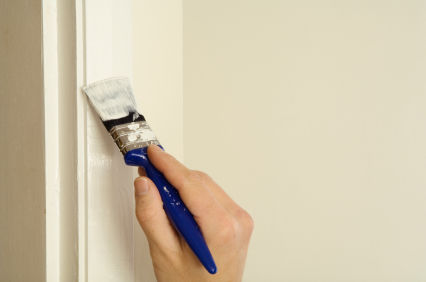- Decorating
- Hardware
- Flooring
- Electrical
- Gardening
- Workwear
- Tools
- Household
- Petcare
- Lighting
- Specials
 Paint Brushs
Paint Brushs
There are two things you need to know in order to select the right paintbrush for the job: 1) the surface you’ll be painting and 2) the type of paint you’ll be using.
Paintbrushes are made in a wide variety of sizes, from the smallest 1/2-inch to the largest 6-inch. You’ll probably need two brushes for every project—a small one for painting trim or detailed areas and a large one for covering surfaces quickly. Just choose the sizes you feel comfortable using, that will "fit" your surface nicely. 
 Use the largest brush suitable for the surface.
Use the largest brush suitable for the surface.
You’ll need small brushes for narrow surfaces, but larger brushes carry more paint so there’s less dipping to refill and fewer strokes to cover the surface. Reduce your effort by choosing the largest suitable brush.
Now for the type of paint you’ll be using. When it comes to paintbrushes, paint is divided into two categories. In the first category you have water-based coatings. The paint can label will have one or a combination of these words: latex, acrylic, waterborne, or water-based. The second category is oil-based coatings. Look for these words on the can label: alkyd, oil, solvent-borne, or oil-based.
For water-based coatings, choose a nylon/polyester (synthetic) brush. Nylon/polyester brushes are durable so they’re great for painting rough surfaces, they maintain their stiffness in humid painting conditions, and they clean the easiest. Actually, you can’t go wrong with a professional nylon/polyester brush like the Specliaste Tip or the high-quality Platitum because they can be used with all paints, water-based or oil-based.
However, for oil-based coatings your best choice is a natural bristle brush like theTradesman. Natural bristle has unique properties that are difficult to duplicate synthetically. Bristle comes in many different lengths and th icknesses to produce a brush that holds a lot of paint. Bristle also has the softest tips for the smoothest finish.
icknesses to produce a brush that holds a lot of paint. Bristle also has the softest tips for the smoothest finish.
Then why not always use a bristle brush? Like our hair, bristle absorbs water. You shouldn’t use a natural bristle brush in water-based paints because you’ll end up with a floppy mop that won’t paint very well. Also, rough surfaces will quickly wear out a bristle brush. So, if you’re using a water-based coating or painting a large rough surface, choose a synthetic brush instead.
How To Paint With A Brush
-
First fill the brush by dipping it halfway into the paint—don’t be bashful and only dip the tips, but don’t drown the brush by sinking it up to its ferrule. Tap the brush lightly inside the can or bucket to prevent dripping.
-
Paint in approximately 2-foot square sections at a time. Overlap each section slightly. Brush from unpainted areas into freshly painting ones so that all the sections blend invisibly together.

-
Long, smooth strokes produce a better finish than short, choppy ones. Finish each stroke with a light, lifting motion toward the last wet edge to help prevent brushmarks. Remember, brushing the paint out too thinly can reduce proper hiding qualities. As the brush begins to run out of paint, refill it instead.